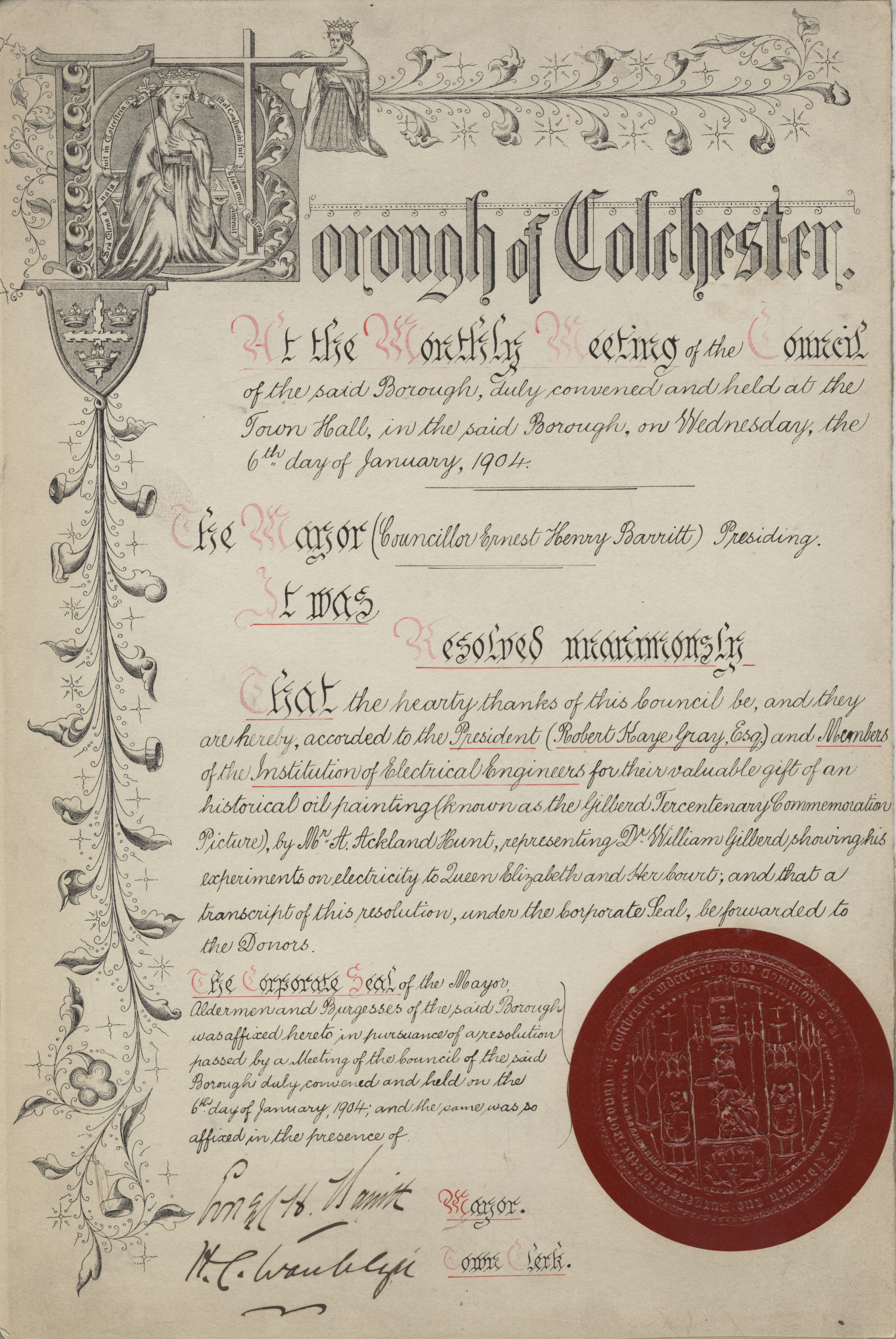
By Anne Locker
Anniversaries are an opportunity to bring people, organisations and places together. In 1903, the Institution of Electrical Engineers (now the IET) celebrated the tercentenary of the death of William Gilbert (also known as William Gilberd) by presenting a painting to the town of Colchester in Essex, Gilbert’s birthplace. Gilbert was physician to Queen Elizabeth I and an early researcher on the science of electricity and magnetism. In his work De Magnete (1600) Gilbert coined the word electricity (from elekron, the Greek word for amber) and demonstrated that the earth acted as a terrestrial magnet with two poles, a vital discovery for the emerging science of navigation. He died during an outbreak of the bubonic plague in London in 1603.
The painting of Gilbert which was presented to Colchester is by Arthur Ackland Hunt and shows Gilbert demonstrating his electrical experiments to Queen Elizabeth and her court. It was presented to the Mayor of Colchester by Silvanus Thompson, a past President of the IEE and expert on the life and work of William Gilbert. It was subsequently placed in the Town Hall ‘to maintain and extend the fame and memory of Gilberd’.
Silvanus Thompson was best known as an educator and the author of the electrical engineering texts Elementary lessons in electricity and magnetism and Calculus made easy, but he was also a keen book collector and biographer. His library of rare books (now held by the IET) includes several editions of Gilbert’s work, one with the cross of the Inquisition burned into its pages (this was due to Gilbert’s support of Copernicus). Thompson founded the Gilbert Club, which aimed to promote Gilbert’s scientific legacy and publish an English translation of De Magnete.
Thompson’s deep interest in Gilbert extended to collecting any books and artefacts he could find. He was able to track down what is thought to be one of the few contemporary portraits of Gilbert (now held in the Archives collections), a book containing his signature and marginal notes, and a rare book of fables which included an illustration used by Gilbert in De Magnete. This illustration, shown below, is attributed to Marcus Gheeraerts the Elder and appears in Cornelius von Kiel, Viridarium Moralis Philosophiae per Fabulas Animalibus brutis attributas traditiae (1594).

The borough of Colchester was grateful for the Institution’s gift, and in turn presented an illuminated address to the IEE. Thompson was invited to attend the town’s annual Oyster Feast (Lord Kelvin was also invited to attend, but declined) and gave a talk on Gilbert’s life and work to the Essex Archaeological Society.

Leave a comment